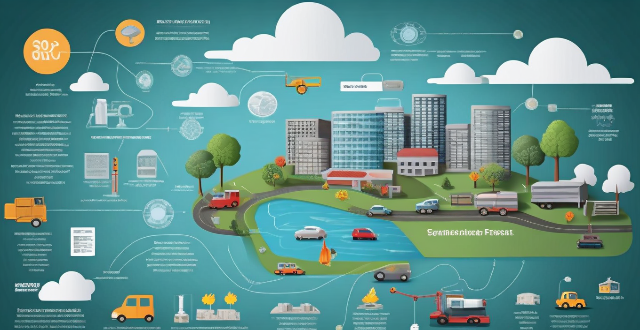International trade and climate agreements are interconnected phenomena that impact the global economy and environment. The relationship is complex, involving governments, international organizations, businesses, and civil society. International trade drives economic growth but also leads to increased greenhouse gas emissions. Carbon leakage occurs when industries relocate to countries with weaker environmental regulations. Global value chains contribute to emissions through transportation and production processes. Climate agreements aim to reduce emissions and promote sustainable development by setting targets for countries to achieve through various measures. They also address carbon leakage by including provisions for cooperation and coordination among countries. The relationship between international trade and climate agreements has important implications for sustainable development, including ensuring equitable economic growth, promoting fair competition, supporting innovation in clean technologies, and encouraging collaboration among countries.

The Relationship between International Trade and Climate Agreements
International trade and climate agreements are two interconnected phenomena that have a significant impact on the global economy and the environment. This relationship is complex and multifaceted, as both areas involve a wide range of stakeholders, including governments, international organizations, businesses, and civil society. In this article, we will explore the key aspects of this relationship and discuss its implications for sustainable development.
The Role of International Trade in Climate Change
Economic Growth and Emissions
International trade has played a crucial role in driving economic growth over the past few decades. However, this growth has also led to an increase in greenhouse gas emissions, which contribute to climate change. As countries become more industrialized and their populations grow, they require more energy and resources to support their economies. This increased demand for energy often results in higher levels of carbon dioxide emissions from burning fossil fuels.
Carbon Leakage
Another issue related to international trade is carbon leakage. When countries implement policies to reduce their own emissions, such as carbon taxes or cap-and-trade systems, some industries may relocate to countries with weaker environmental regulations. This can lead to an overall increase in global emissions, as the production of goods shifts to countries with lower environmental standards.
Global Value Chains
The rise of global value chains has also had an impact on emissions. As companies source materials and components from different countries around the world, the transportation of these goods contributes to greenhouse gas emissions. Additionally, the production processes involved in creating these products often require large amounts of energy, further contributing to emissions.
The Role of Climate Agreements in International Trade
Mitigating Emissions
Climate agreements aim to reduce greenhouse gas emissions by setting targets for countries to achieve through various measures, such as renewable energy deployment, energy efficiency improvements, and forest conservation. These efforts can help mitigate the negative effects of international trade on the environment by reducing the overall level of emissions associated with economic activity.
Promoting Sustainable Development
Climate agreements also promote sustainable development by encouraging countries to adopt policies that support low-carbon growth paths. This can include investing in clean technologies, promoting green infrastructure, and supporting sustainable agriculture practices. By transitioning towards more sustainable forms of development, countries can reduce their reliance on fossil fuels and decrease their overall emissions while still maintaining economic growth.
Addressing Carbon Leakage
To address the issue of carbon leakage, climate agreements often include provisions for cooperation and coordination among countries. These provisions aim to ensure that countries do not undercut each other's efforts to reduce emissions by implementing weaker environmental regulations or offering incentives for companies to relocate. By working together, countries can create a level playing field for all participants in the global marketplace while still achieving their climate goals.
Implications for Sustainable Development
The relationship between international trade and climate agreements has important implications for sustainable development. By addressing the challenges posed by international trade and climate change, countries can work towards a more equitable and sustainable future for all. Some key considerations include:
* Ensuring that economic growth does not come at the expense of the environment or human well-being.
* Promoting fair competition among countries by addressing issues such as carbon leakage and ensuring a level playing field for all participants in the global marketplace.
* Supporting innovation and investment in clean technologies and sustainable infrastructure to drive low-carbon growth paths.
* Encouraging collaboration among countries to share best practices and coordinate efforts to reduce emissions and promote sustainable development.
In conclusion, the relationship between international trade and climate agreements is complex and multifaceted, with significant implications for sustainable development. By working together to address these challenges, countries can create a more equitable and sustainable future for all.